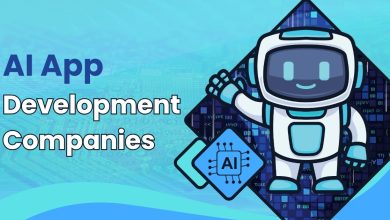
Agentic AI is quickly going mainstream, but beyond the hype, what does it mean for businesses?
Today’s models are already enabling AI to go beyond simple chatbot interactions. They involve high-value, sometimes high-risk, workflows such as deploying software, approving transactions, or rerouting supply chains. The concept is compelling – automating processes and streamlining tasks. But AI also introduces a significant number of new risks when it comes to security, compliance, and trust.
Without the proper safeguards in place, a single misstep by an agentic agent could damage organisational infrastructure, expose sensitive data, or trigger costly operational failures. While we’re still getting used to trusting machines to make informed recommendations, trusting them to carry out dependable actions is a different game altogether.
AI presents a significant opportunity to take on some of the world’s toughest challenges, but what if its future lies not in going big, but in going small? As technology leaders, it’s crucial to understand both the risks and benefits of deploying smaller, specialised AI agents to address specific use cases, what this means for efficiency within the enterprise, and how organisations can best monitor implementation to track and report on success.
Smaller and smarter
Using large, general-purpose foundational models, such as GPT-4, Gemini, or Claude for automatable tasks is becoming mainstream, yet the industry is also building smaller, more fine-tuned models for singular, more critical purposes – such as auto-patching software, checking documents for regulatory compliance, or resolving routine HR and IT service requests.
These models are not trained to know about everything, but rather to be specialists on specific use cases. Whether the task is managing cloud infrastructure, patching software, or automating compliance checks, these targeted models often outperform their larger counterparts in their respective roles and specified subjects.
When designed around a specific task, these compact models frequently deliver better results at a much lower cost. But with more agents can come more complexity, and it’s up to business leaders to determine which AI approaches are most effective for their individual business.
Efficiency, cost and control
One of the most significant advantages of smaller models is their cost-effectiveness. Not only do foundational models carry a huge computational burden, but organisations end up paying for knowledge and capacity that may never be relevant to their business.
For example, a cybersecurity company leveraging a large model doesn’t just pay for knowledge about their specific industry, they’re also paying for information around construction, retail, and other industries not as applicable to their business.
Smaller models eliminate this inefficiency. They are cheaper to run, faster to deploy, and easier to manage, each one expertly trained for a single task, rather than a generalist trying to do everything.
What does this mean for the technology stack?
This trend is transforming the enterprise technology stack. Instead of applying a single AI solution across operations, companies are beginning to embed dozens, or even hundreds, of smaller agentic agents across their platforms. These agents will be integrated with back-end systems and microservices, each responsible for a specific function. They will communicate with each other, coordinate workflows, and make localised decisions.
Over time, technology stacks will evolve into loosely connected ecosystems of domain-specific AI agents – modular, efficient and built to scale. However, to avoid the risk of operational errors occurring, it will be equally essential for organisations to invest in platforms that allow IT teams to oversee and remotely manage these small AI agents, securely and at scale.
What does this mean for IT?
For IT teams, AI presents both a challenge and a unique opportunity. Especially when leveraging numerous small agentic agents within a single organisation, these models will provide both entry and exit points for data to be exchanged between systems – making them virtual endpoints themselves. And because they can make decisions, they also carry added operational and reputational risks.
Visibility is the name of the game when it comes to generating value from an ecosystem of AI models. Teams will need new frameworks for validating, deploying, monitoring, and retraining large numbers of specialised models. When adopting at scale, IT leaders should think about which processes can be most easily streamlined for their teams and be sure to have humans check AI’s work and decisions before those actions are pulled through.
Procurement will change. Rather than licensing a single, all-powerful AI system, organisations will increasingly license or outsource the development of multiple smaller ones. Mid-sized companies are likely to rely on external partners to build or supply these models, while enterprises may have the resources to invest in developing these models themselves.
The result will be a more distributed, flexible approach to AI across the business landscape. The rise of small, highly specialised agentic AI agents promises a future where decisions and actions are automated with unprecedented speed, precision, and cost efficiency.
While the future of effective AI is in smaller, purpose-built models, it’s potential to transform business operations, and the working world around us, is immense.



